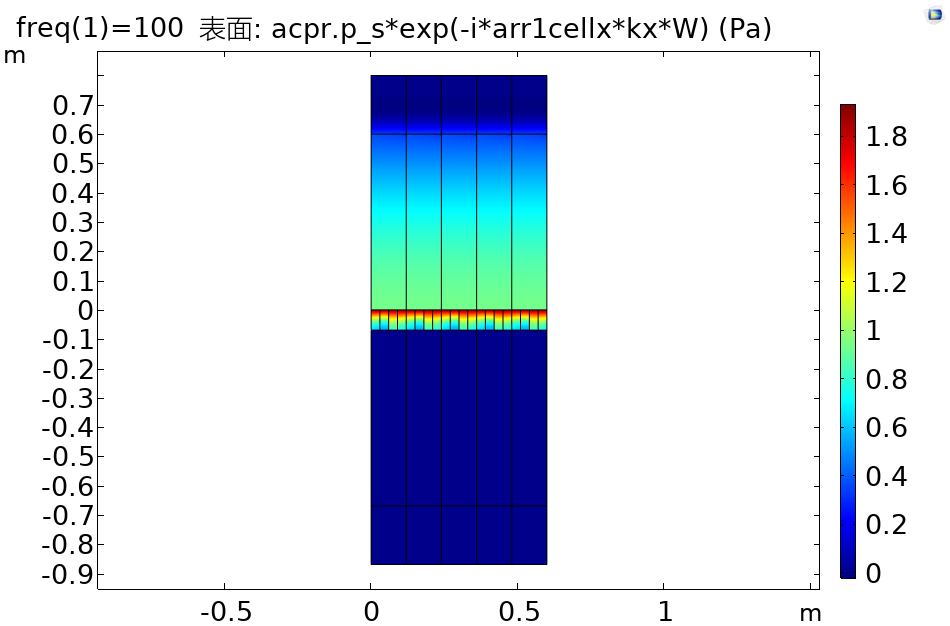1. list的介绍
list其实就是就是我们所熟知的链表(双向循环带头结点),但其是作为STL中的一个类模板而存在。
也就是说,list是可以用来存储任意类型数据的顺序表,既可以是内置类型,也可以是自定义类型,或是STL中的其他容器。
除了底层的实现不同以外,用法与vector基本相同,但不支持随机访问,以及与随机访问有关的接口。
具体以list - C++ Reference为准,本文为该文档的一个简单总结与标注。
2. list的重要接口
以下表格中的函数都不是官方库中的函数原型,而是为了方便学习和理解而进行了简化的。
2.1 默认成员函数
2.1.1 构造函数

| (1) list(); | 默认构造 |
| (2) list(size_t n, const T& val = T()); | 用val初始化list前n个数据 |
| (3) template<class InputIterator> list(InputIterator first, InputIterator last); | 用迭代器区间进行初始化 |
| (4) list(const list& x); | 拷贝构造 |
2.1.2 赋值重载

2.2 迭代器相关
| begin | 返回开始位置的迭代器 |
| end | 返回最后一个数据的下一个位置的迭代器 |
| rbegin | 用于逆向迭代 |
| rend | 用于逆向迭代 |
| cbegin | 用于const修饰的容器的迭代 |
| cend | 用于const修饰的容器的迭代 |
| crbegin | 用于const修饰的容器的逆向迭代 |
| crend | 用于const修饰的容器的逆向迭代 |
2.3 大小容量相关
| bool empty() const; | 判断list是否为空 |
| size_t size() const; | 返回list中的数据个数 |
| size_t max_size() const; | 返回由于系统或数据库限制,list能够存储数据的最大容量(并不一定能达到) |
2.4 访问相关
| (1) T& front(); (2) constT& front() const; | 返回第一个元素的引用 |
| (1) T& back(); (2) constT& back() const; | 返回最后一个元素的引用 |
2.5 元素修改相关
| (1) template<class InputIterator> void assign(InputIterator first, InputIterator last); (2) void assign(size_t n, const T& val); | 给list赋新的值,效果类似于重新构造这个list |
| void push_front(const T& val); | 在list头部插入一个元素 |
| void push_back(const T& val); | 在list尾部插入一个元素 |
| void pop_front(); | 删除list头部的一个元素 |
| void pop_back(); | 删除list尾部的一个元素 |
| (1) iterator insert(iterator pos, const T& val); (2) void insert(iterator pos, size_t n, const T& val); (3) template <class InputIterator> void insert(iterator position, InputIterator first,InputIterator last); | 在指定位置插入元素,常数时间O(1),效率很高,不会导致迭代器失效 |
| (1) iterator erase(iterator pos); (2) iterator erase(iterator first, iterator last); | 删除指定位置的数据,常数时间O(1),效率很高,会导致当前位置迭代器失效 |
| void swap(list<T>& x); | 交换两个list的数据 |
| void resize(size_t n, T val = T()); | 改变list的元素个数,使其容纳n个元素,n<size则删除多余的,n>size则加入n个值与val相同的元素 |
| void clear(); | 清空list |
2.6 list结点移动
| (1) void splice(iterator position, list& x); (2) void splice(iterator position, list& x, iterator i); (3) void splice(iterator position, list& x, iterator first, iterator last); | (1) 将x的结点全部移动到position位置 (2) 将x中i指向的结点移动到position位置 (3) 将x中first到last的结点移动到position位置 |
| void remove(const T& val); | 移除list中与val值相同的结点 |
| template <class Predicate> void remove_if(Predicate pred); | 按照pred(*it)函数的返回值(true移除/false不移除)来移除结点 |
| (1) void unique(); (2) template <class BinaryPredicate> void unique(BinaryPredicate binary_pred); | (1) 移除值连续相等(operator==)的几个结点,只留下这组结点中的第一个(在处理经过排序的list时,能确保各种值得结点只留下一个) (2) 按照binary_pred(*it, *(it-1))给出的逻辑判断结点的值是否相等,进而删除结点 |
| (1) void merge(list& x); (2) template <class Compare> void merge(list& x, Compare comp); | (1) 将x合并到调用函数的list中(x的结点全部移动到list中,并确保合并后的list中的结点也是有序(operator<)的,但要求两个list事先都是有序的。如果list==*this,该函数无行为) (2) 按照comp函数给出的比较方式来进行有序的合并 |
| (1) void sort(); (2) template <class Compare> void sort(Compare comp); | (1) 按照operator<进行排序 (2) 按照comp给出的比较方式排序 |
| void reverse(); | 逆置list |
3. 迭代器失效
迭代器失效即迭代器所指向的节点的无效,即该节点被删除了。
因为list的底层结构为带头结点的双向循环链表,因此在list中进行插入时是不会导致list的迭代器失效的,只有在删除时才会失效,并且失效的只是指向被删除节点的迭代器,其他迭代器不会受到影响。
4. list不完全模拟实现示例
#pragma once
#include<iostream>
using namespace std;
namespace lbz
{
// List的节点类
template<class T>
struct ListNode
{
ListNode(const T& val = T())
:_val(val)
,_pPre(nullptr)
,_pNext(nullptr)
{}
ListNode<T>* _pPre;
ListNode<T>* _pNext;
T _val;
};
//List的迭代器类
template<class T, class Ref, class Ptr>
struct ListIterator
{
typedef ListNode<T>* PNode;
typedef ListIterator<T, Ref, Ptr> Self;
typedef Ref _Ref;
typedef Ptr _Ptr;
public:
ListIterator(PNode pNode = nullptr)
:_pNode(pNode)
{}
ListIterator(const Self& l)
:_pNode(l._pNode)
{}
T& operator*()
{
return _pNode->_val;
}
// 按理来说在使用时需要两个->,但编译器为了可读性做了优化
T* operator->()
{
return &(_pNode->_val);
}
Self& operator++()
{
_pNode = _pNode->_pNext;
return (*this);
}
Self operator++(int)
{
Self tmp = (*this);
_pNode = _pNode->_pNext;
return tmp;
}
Self& operator--()
{
_pNode = _pNode->_pPre;
return (*this);
}
Self& operator--(int)
{
Self tmp = (*this);
_pNode = _pNode->_pPre;
return tmp;
}
bool operator!=(const Self& l) const
{
return (this->_pNode != l._pNode);
}
bool operator==(const Self& l) const
{
return (this->_pNode == l._pNode);
}
PNode _pNode;
};
template<class iterator>
struct reverseListIterator
{
typedef typename iterator::_Ref Ref;
typedef typename iterator::_Ptr Ptr;
typedef reverseListIterator<iterator> Self;
reverseListIterator(iterator it)
:_it(it)
{}
Ref operator*()
{
iterator tmp(_it);
--tmp;
return *tmp;
}
Ptr operator->()
{
return &(operator*());
}
Self& operator++()
{
--_it;
return *this;
}
Self& operator++(int)
{
Self tmp(*this);
--_it;
return tmp;
}
Self& operator--()
{
++_it;
return *this;
}
Self& operator--(int)
{
Self tmp(*this);
++_it;
return tmp;
}
bool operator==(const Self& rit) const
{
return _it == rit._it;
}
bool operator!=(const Self& rit) const
{
return _it != rit._it;
}
iterator _it;
};
//list类
template<class T>
class list
{
typedef ListNode<T> Node;
typedef Node* PNode;
public:
typedef ListIterator<T, T&, T*> iterator;
typedef ListIterator<T, const T&, const T&> const_iterator;
typedef reverseListIterator<iterator> reverse_iterator;
typedef reverseListIterator<const_iterator> const_reverse_iterator;
public:
///
// List的构造
list()
{
CreateHead();
}
list(int n, const T& value = T())
{
CreateHead();
while (n--)
{
push_back(value);
}
}
template <class Iterator>
list(Iterator first, Iterator last)
{
CreateHead();
while (first != last)
{
push_back(*first);
++first;
}
}
list(const list<T>& l)
{
CreateHead();
list tmp(l.begin(), l.end());
swap(tmp);
}
// 支持用大括号参数列表构造/隐式类型转换
list(initializer_list<T> il)
{
CreateHead();
for (auto& e : il)
{
push_back(e);
}
}
list<T>& operator=(const list<T> l)
{
list tmp(l.begin(), l.end());
swap(tmp);
return *this;
}
~list()
{
clear();
delete _pHead;
_pHead = nullptr;
}
///
// List Iterator
iterator begin()
{
return iterator(_pHead->_pNext);
}
iterator end()
{
return iterator(_pHead);
}
const_iterator begin() const
{
return const_iterator(_pHead->_pNext);
}
const_iterator end() const
{
return const_iterator(_pHead);
}
const_iterator cbegin() const
{
return const_iterator(_pHead->_pNext);
}
const_iterator cend() const
{
return const_iterator(_pHead);
}
reverse_iterator rbegin()
{
return reverse_iterator(end());
}
reverse_iterator rend()
{
return reverse_iterator(begin());
}
const_reverse_iterator crbegin() const
{
return const_reverse_iterator(cend());
}
const_reverse_iterator crend() const
{
return const_reverse_iterator(cbegin());
}
///
// List Capacity
size_t size()const
{
return _size;
}
bool empty()const
{
return !_size;
}
// List Access
T& front()
{
return _pHead->_pNext->_val;
}
const T& front()const
{
return _pHead->_pNext->_val;
}
T& back()
{
return _pHead->_pPre->_val;
}
const T& back()const
{
return _pHead->_pPre->_val;
}
// List Modify
void push_back(const T& val) { insert(end(), val); }
void pop_back() { erase(--end()); }
void push_front(const T& val) { insert(begin(), val); }
void pop_front() { erase(begin()); }
// 在pos位置前插入值为val的节点
iterator insert(iterator pos, const T& val)
{
PNode newnode = new Node(val);
newnode->_pNext = pos._pNode;
newnode->_pPre = pos._pNode->_pPre;
pos._pNode->_pPre->_pNext = newnode;
pos._pNode->_pPre = newnode;
_size++;
return pos;
}
// 删除pos位置的节点,返回该节点的下一个位置
iterator erase(iterator pos)
{
pos._pNode->_pNext->_pPre = pos._pNode->_pPre;
pos._pNode->_pPre->_pNext = pos._pNode->_pNext;
iterator ret = pos._pNode->_pNext;
delete pos._pNode;
--_size;
return ret;
}
void clear()
{
PNode cur = _pHead->_pNext->_pNext;
while (cur != _pHead->_pNext)
{
delete cur->_pPre;
cur = cur->_pNext;
}
_pHead->_pNext = _pHead;
_pHead->_pPre = _pHead;
_size = 0;
}
void swap(list<T>& l)
{
std::swap(_pHead, l._pHead);
std::swap(_size, l._size);
}
private:
void CreateHead()
{
_pHead = new Node;
_pHead->_pNext = _pHead;
_pHead->_pPre = _pHead;
}
PNode _pHead;
size_t _size = 0;
};
};5. list的迭代器
由于底层结构的复杂性,list的迭代器不再像string和vector那样可以直接由指针代劳。
我们依然将结点指针作为list迭代器的底层,但是各操作符原本的逻辑已经无法满足我们的需要,均需要进行重载。
于是,我们用ListIterator类对结点的指针进行了包装,并对所需的操作符进行了相应的重载。
//List的迭代器类
template<class T, class Ref, class Ptr>
struct ListIterator
{
typedef ListNode<T>* PNode;
typedef ListIterator<T, Ref, Ptr> Self;
typedef Ref _Ref;
typedef Ptr _Ptr;
public:
ListIterator(PNode pNode = nullptr)
:_pNode(pNode)
{}
ListIterator(const Self& l)
:_pNode(l._pNode)
{}
T& operator*()
{
return _pNode->_val;
}
// 按理来说在使用时需要两个->,但编译器为了可读性做了优化
T* operator->()
{
return &(_pNode->_val);
}
Self& operator++()
{
_pNode = _pNode->_pNext;
return (*this);
}
Self operator++(int)
{
Self tmp = (*this);
_pNode = _pNode->_pNext;
return tmp;
}
Self& operator--()
{
_pNode = _pNode->_pPre;
return (*this);
}
Self& operator--(int)
{
Self tmp = (*this);
_pNode = _pNode->_pPre;
return tmp;
}
bool operator!=(const Self& l) const
{
return (this->_pNode != l._pNode);
}
bool operator==(const Self& l) const
{
return (this->_pNode == l._pNode);
}
PNode _pNode;
};其中Ref代表T的引用,Ptr代表T的指针,根据这两个参数是否被const修饰,我们可以实例化出普通的迭代器和const迭代器:
typedef ListIterator<T, T&, T*> iterator;
typedef ListIterator<T, const T&, const T&> const_iterator;6. list反向迭代器
与正向迭代器相比,反向迭代器只是在进行++或--的行为与其不同。
我们可以采用适配器模式(stack和queue也是采用该种模式对其他容器进行包装)来实现反向迭代器:
用迭代器作为反向迭代器的底层,通过对正向迭代器的接口进行包装,使其行为满足我们的需求。
template<class iterator>
struct reverseListIterator
{
typedef typename iterator::_Ref Ref;
typedef typename iterator::_Ptr Ptr;
typedef reverseListIterator<iterator> Self;
reverseListIterator(iterator it)
:_it(it)
{}
Ref operator*()
{
iterator tmp(_it);
--tmp;
return *tmp;
}
Ptr operator->()
{
return &(operator*());
}
Self& operator++()
{
--_it;
return *this;
}
Self& operator++(int)
{
Self tmp(*this);
--_it;
return tmp;
}
Self& operator--()
{
++_it;
return *this;
}
Self& operator--(int)
{
Self tmp(*this);
++_it;
return tmp;
}
bool operator==(const Self& rit) const
{
return _it == rit._it;
}
bool operator!=(const Self& rit) const
{
return _it != rit._it;
}
iterator _it;
};同理,我们可以定义出普通反向迭代器和const反向迭代器:
typedef reverseListIterator<iterator> reverse_iterator;
typedef reverseListIterator<const_iterator> const_reverse_iterator;7. list和vector的区别
| 容器 | list | vector |
| 底层结构 | 带头结点的双向循环链表 | 动态顺序表,一段连续空间 |
| 随机访问 | 不支持随机访问,访问某个元素效率O(N) | 支持随机访问,访问某个元素效率O(N) |
| 插入和删除 | 任意位置插入和删除效率高,不需要搬移元素,时间复杂度为O(1) | 任意位置插入和删除效率低,需要搬移元素,时间复杂度为O(N),插入时有可能需要增容 增容:开辟新空间,拷贝元素,释放旧空间,导致效率更低 |
| 空间利用率 | 底层节点动态开辟,小节点容易造成内存碎片,空间利用率低,缓存利用率低 | 底层为连续空间,不容易造成内存碎片,空间利用 率高,缓存利用率高 |
| 迭代器 | 对原生态指针(节点指针)进行封装 | 原生态指针 |
| 迭代器失效 | 插入元素不会导致迭代器失效,删除元素时,只会导致当前迭代器失效,其他迭代器不受影响 | 在插入元素时,要给所有的迭代器重新赋值,因为插入元素有可能会导致重新扩容,致使原来迭代器失效,删除时,当前迭代器需要重新赋值否则会失效 |
| 使用场景 | 大量插入和删除操作,不关心随机访问 | 需要高效存储,支持随机访问,不关心插入删除效率 |


















